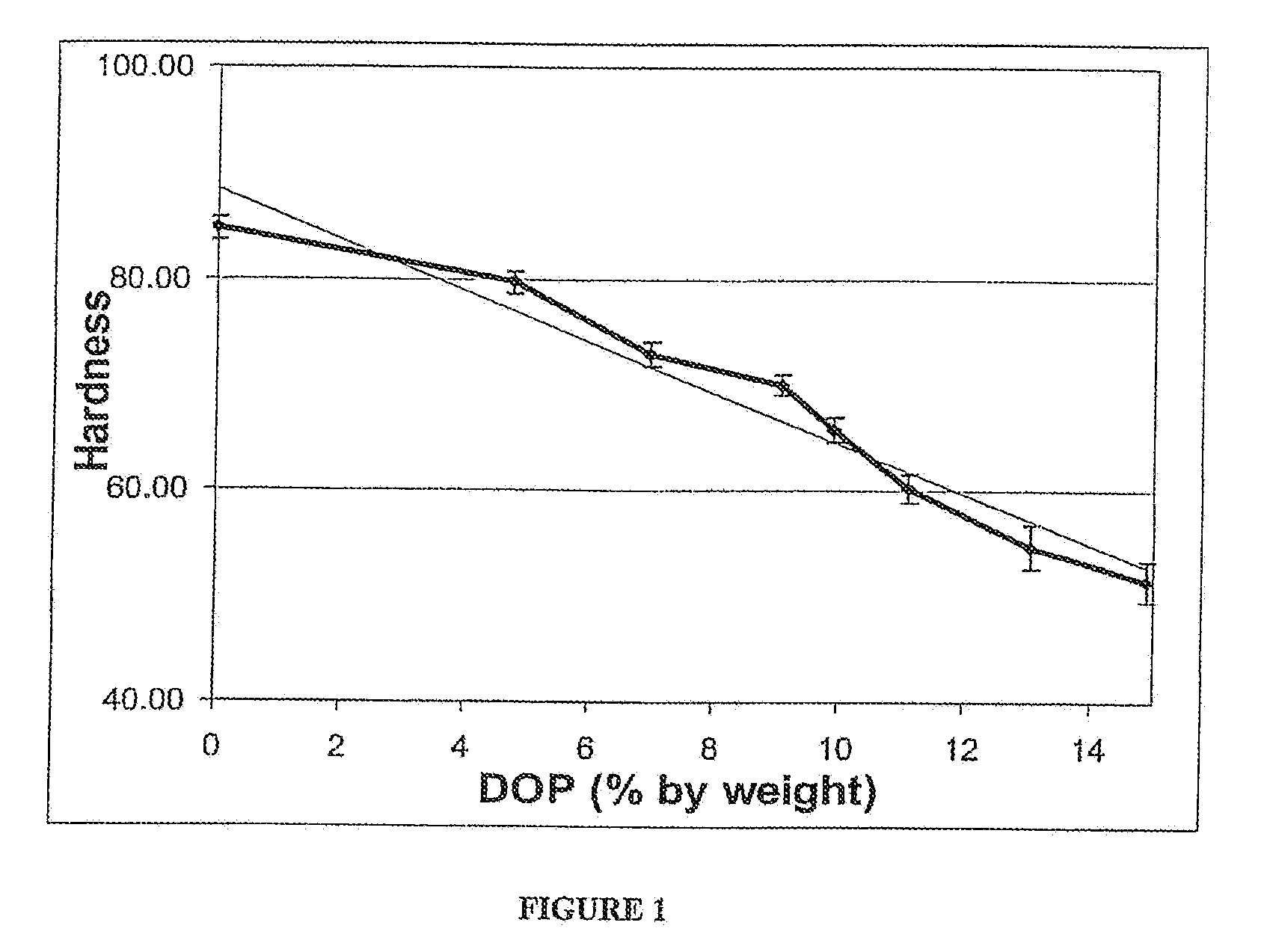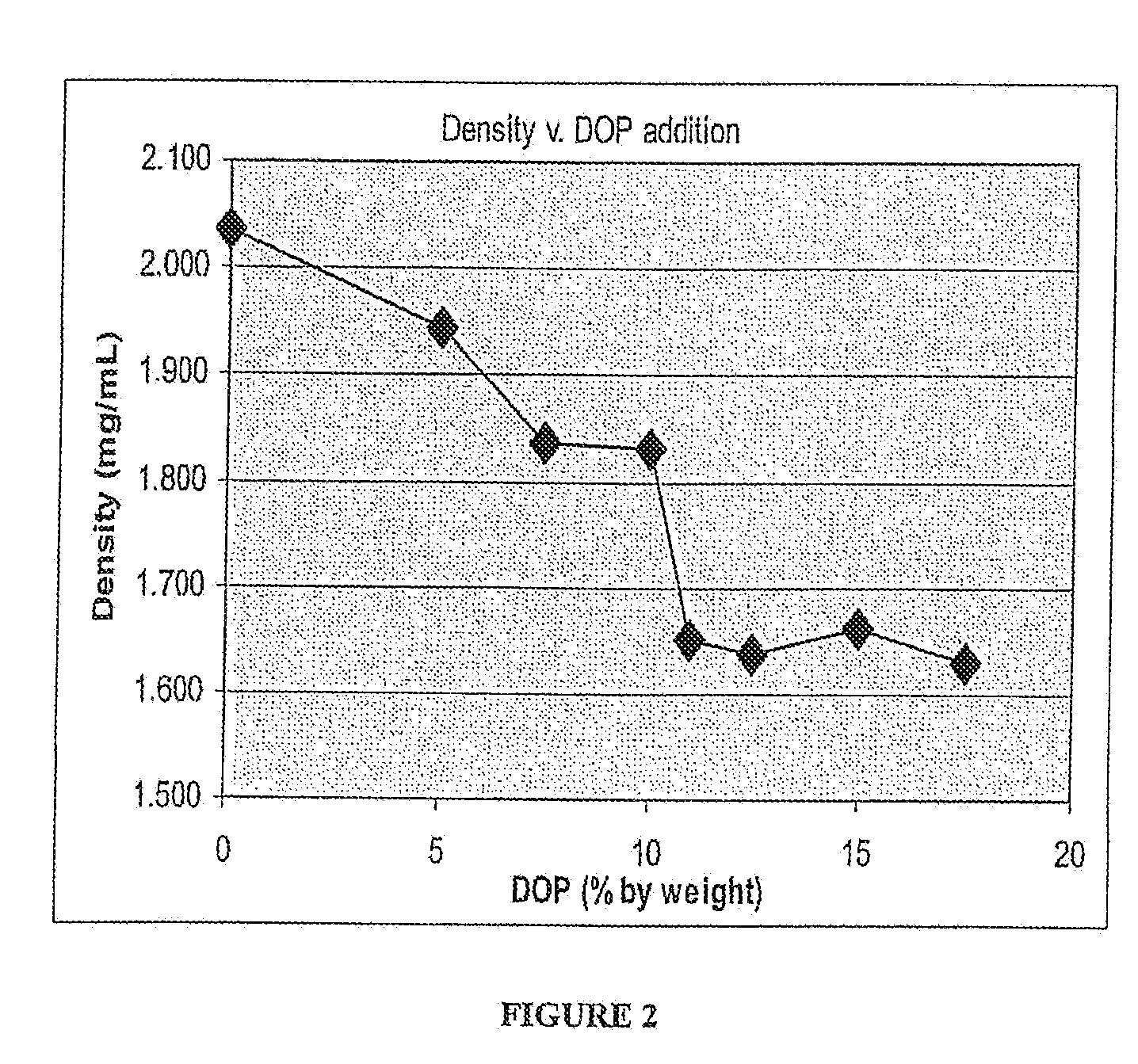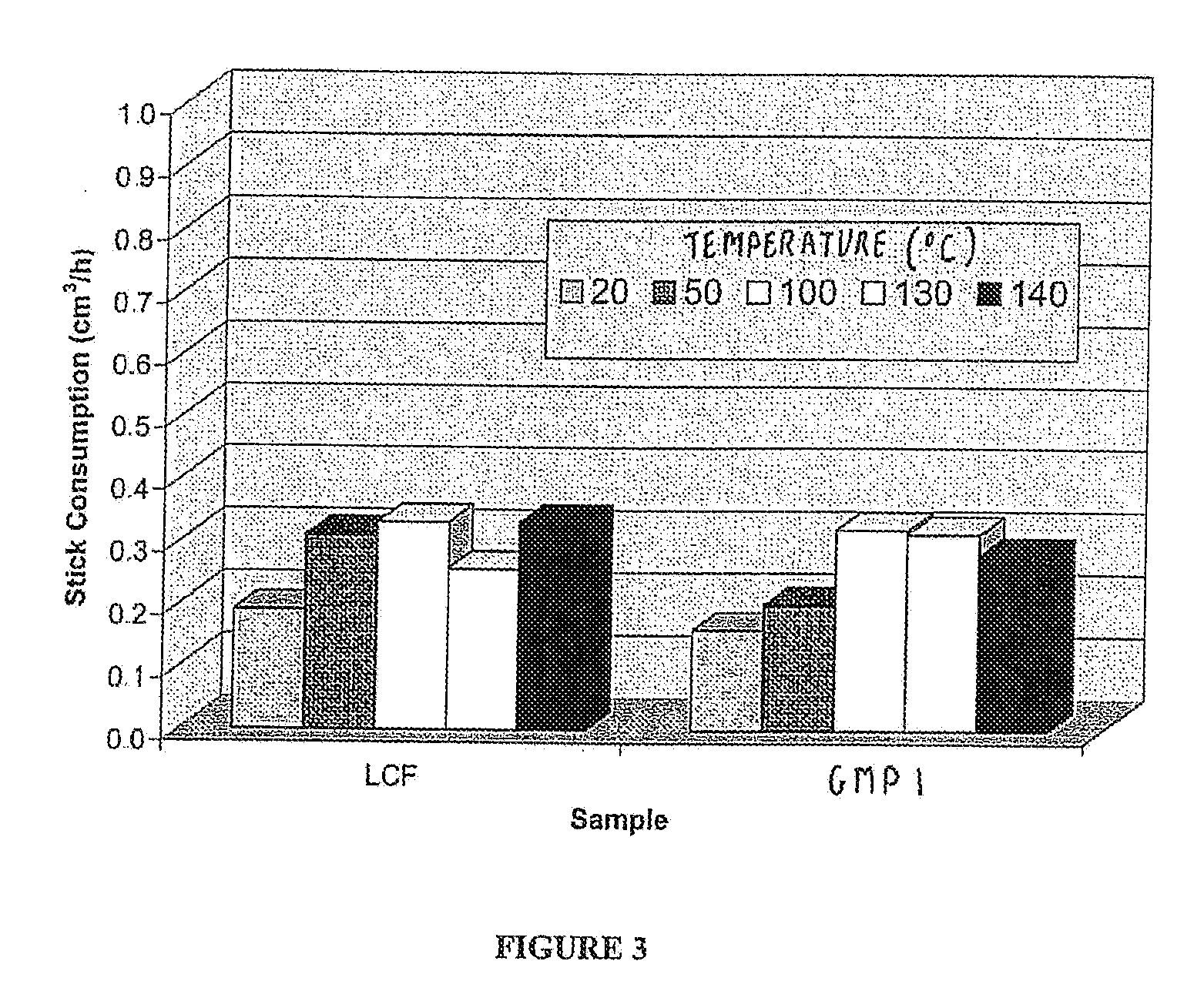Solid stick grease compositions
a technology of solid stick and composition, applied in the direction of rail lubrication, liquid carbonaceous fuel, base materials, etc., can solve the problems of uneven wear of mechanical components, high noise level of mechanical components,
- Summary
- Abstract
- Description
- Claims
- Application Information
AI Technical Summary
Benefits of technology
Problems solved by technology
Method used
Image
Examples
example 1
Preparation of Solid Stick Compositions
Standard Manufacturing Process for Solid Stick Compositions:
[0114] A thermosetting plasticizer, for example but not limited to dioetyl phthalate, dioctyl adipate, or a polymeric plasticizers, may be added under stirring to a promoter mixture comprising resin, for example but not limited to HETRON 99P™, in a large vat or drum. The solid lubricant, for example graphite, molybdenum disulphide, a friction modifier, or a mixture thereof, is then slowly added to the mixture and dispersed into the resin. Other components may be added to the mixture, for example but not limited to n, n-dimethylamine (DMA) or Nuxtra Cobalt 12%. Further ingredients may also be added to the mixture including, but not limited to, styrene and additional friction modifiers or enhancers. The mixture is typically mixed at high speed (for example but not limited to 20 psi air pressure) for a period of time (for example but not limited to 2 hours), followed by an overnight pe...
example 2
Characterization of Plasticizer Solid Stick Compositions
Effect of Plasticizer Addition on Hardness and Density
[0122] Different amounts (as a weight % of the total composition) of a dioctyl phthalate plasticizer (BASF PALATINOL DOP™) were incorporated into the standard formulation given in Table 2. The DOP was added whilst maintaining the resin-MoS2 ratio constant and decreasing the absolute content of both. The hardness and density of the resultant cured sticks was measured. Stick hardness was measured using a D-type Durometer (as outlined in Example 1).
[0123]FIG. 1 shows the relationship between DOP content (% by weight of total composition) and stick hardness. A linear relationship between DOP content and stick hardness of from about 45 to 85 is observed, with an increase in DOP content leading to a proportional decrease in stick hardness.
[0124]FIG. 2 shows the relationship between DOP content (% by weight of total composition) and stick density (mg / ml). FIG. 2 indicates that...
example 3
Comparison of Plasticizer Solid Stick Compositions with Known Solid Stick Compositions
[0125] The following Graphite-MoS2-Plasticizer (GMP) solid stick compositions from Table 4 were selected for further testing: [0126] GMP 1 comprising 25.5% TIMCAL 80×150™ graphite; 14.5% MoS2; 7% PALAMOLL 652™; with a hardness of 65.7 [0127] GMP 2 comprising 25.5% TIMCAL 20×50™ graphite; 14.5% MoS2; 7% PALAMOLL 652™; with a hardness of 64.9; [0128] GMP 3 comprising 25.5% TIMCAL 5×80™ graphite; 14.5% MoS2; 7.5% PALAMOLL 652™; with a hardness of 63.8; and [0129] GMP 4 comprising 28.9% SUPERIOR GRAPHITE 5020-L™; 11.1% MoS2; 10% PALAMOLL 652™; with a hardness of 64.2.
[0130] The GMP sticks were compared to a known Low Coefficient of Friction (LCF) stick comprising the components given in Table 2, prepared in the absence of a plasticizer, and also to four different known stick compositions generally comprising between 10%-60% solid lubricant (as a mixture of graphite and molybdenum disulphide) and comp...
PUM
| Property | Measurement | Unit |
|---|---|---|
| Percent by mass | aaaaa | aaaaa |
| Percent by mass | aaaaa | aaaaa |
| Percent by mass | aaaaa | aaaaa |
Abstract
Description
Claims
Application Information
 Login to View More
Login to View More - R&D
- Intellectual Property
- Life Sciences
- Materials
- Tech Scout
- Unparalleled Data Quality
- Higher Quality Content
- 60% Fewer Hallucinations
Browse by: Latest US Patents, China's latest patents, Technical Efficacy Thesaurus, Application Domain, Technology Topic, Popular Technical Reports.
© 2025 PatSnap. All rights reserved.Legal|Privacy policy|Modern Slavery Act Transparency Statement|Sitemap|About US| Contact US: help@patsnap.com



